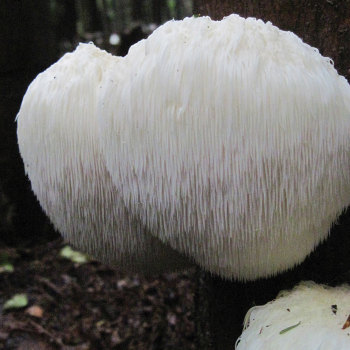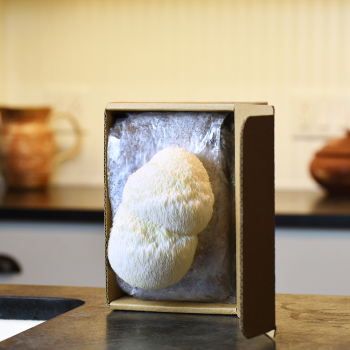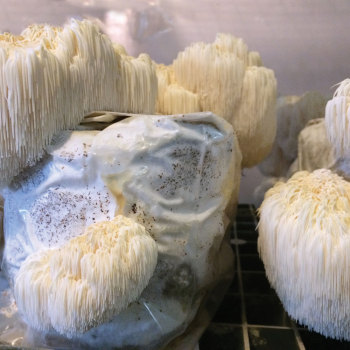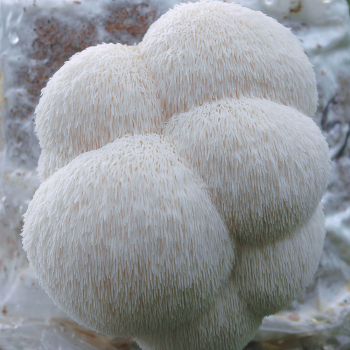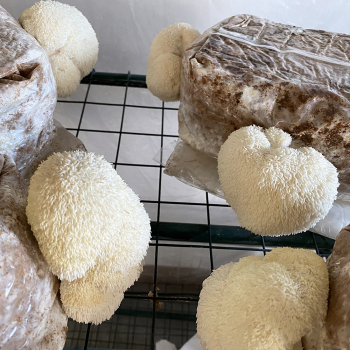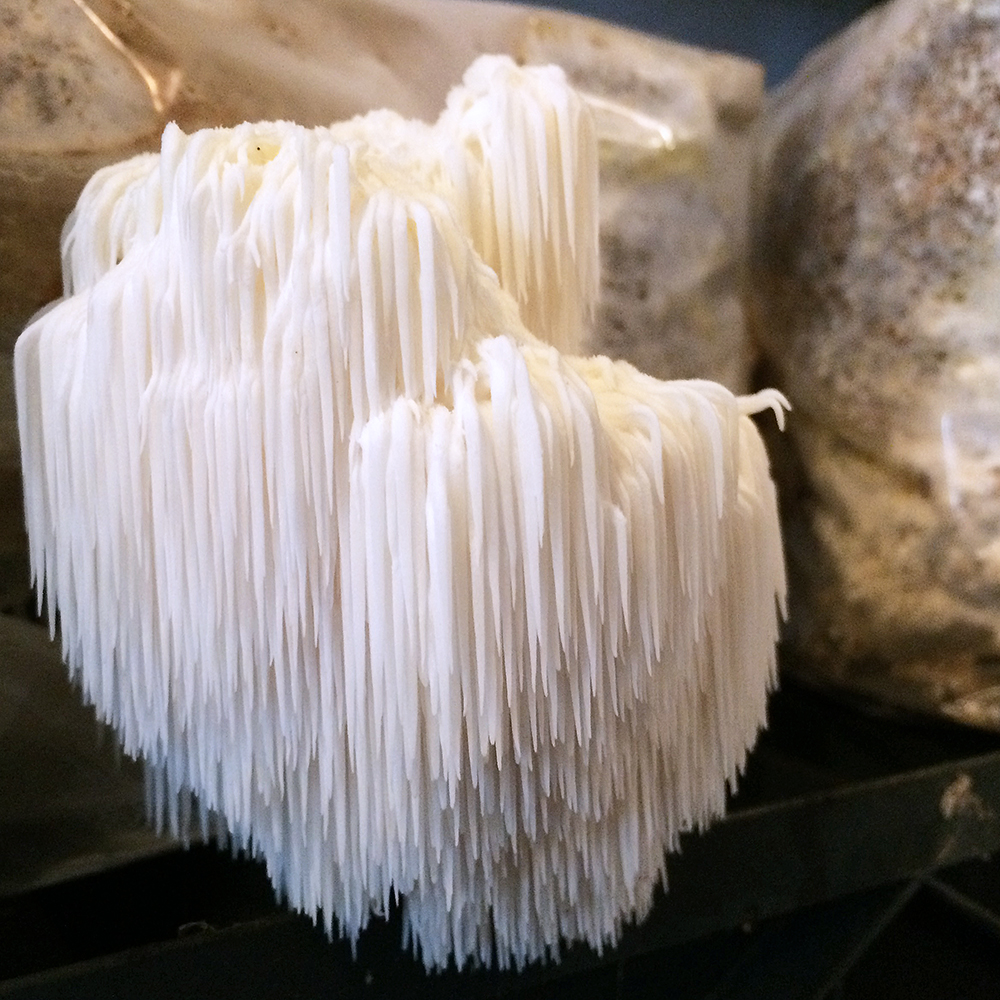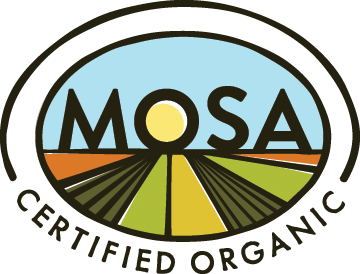Lion's Mane
Hericium erinaceus
Softball size clusters with cascading long spines make this Hericium one of the most breath-taking mushrooms. Lion's Mane has received attention in recent years for it's neurotrophic capabilities by potentially keeping our brains strong and helping strengthen those suffering from Alzheimer's and dementia. While Lion's Mane grown in sawdust culture can sometimes be slightly bitter, its log grown counterpart is almost always sweet and succulent. Patience is required for growing Lion's Mane on logs, often taking two years for fruiting to begin. Lion's Mane fruits in spring and fall.
Cultivation: Both of the Hericium species we carry can be cultivated on natural logs using a process very similar to Shiitake cultivation. Hericium is a slower growing, less aggressive fungus, so doubling the inoculation rate will speed up the colonization and subsequent fruiting. Traditionally, Beech, Sugar Maple and Ironwood are the preferred tree species for growing Lion's Mane and Comb Tooth. Other soft hardwoods such as Tulip Poplar, Aspen, Sweet Gum, and soft maples show promise. In addition to the drill-and-fill inoculation method, the totem-style inoculation method using sawdust spawn has proven to be very successful when using hardwood rounds.
Following spawn run, place the colonized logs in a humid, shady location and watch for fruiting, especially in the fall. Lion's Mane is also available in ready-to-fruit Table Top Farms and 8-Block Sets.
More Information and Tips for Growing Lion's Mane Mushrooms
Softball size clusters with cascading long spines make this Hericium one of the most breath-taking mushrooms. Lion's Mane has received attention in recent years for it's neurotrophic capabilities by potentially keeping our brains strong and helping strengthen those suffering from Alzheimer's and dementia. While Lion's Mane grown in sawdust culture can sometimes be slightly bitter, its log grown counterpart is almost always sweet and succulent. Patience is required for growing Lion's Mane on logs, often taking two years for fruiting to begin. Lion's Mane fruits in spring and fall.
Cultivation: Both of the Hericium species we carry can be cultivated on natural logs using a process very similar to Shiitake cultivation. Hericium is a slower growing, less aggressive fungus, so doubling the inoculation rate will speed up the colonization and subsequent fruiting. Traditionally, Beech, Sugar Maple and Ironwood are the preferred tree species for growing Lion's Mane and Comb Tooth. Other soft hardwoods such as Tulip Poplar, Aspen, Sweet Gum, and soft maples show promise. In addition to the drill-and-fill inoculation method, the totem-style inoculation method using sawdust spawn has proven to be very successful when using hardwood rounds.
Following spawn run, place the colonized logs in a humid, shady location and watch for fruiting, especially in the fall. Lion's Mane is also available in ready-to-fruit Table Top Farms and 8-Block Sets.
*Please Note: Lion's Mane mycelium is light and wispy, leading to an "uncolonized" appearance in the spawn. This is normal!
More Information and Tips for Growing Lion's Mane Mushrooms
-
Lion's Mane - (Hericium erinaceus) Plug Spawn
Its distinctive appearance inspires a variety of nicknames, but we simply call Lion's Mane delicious! Cultivate this...$23.00–$46.00 -
Lion's Mane - (Hericium erinaceus) Sawdust Spawn
Its distinctive appearance inspires a variety of nicknames, but we simply call Lion's Mane delicious! Lion's Mane...$26.00 -
Lion's Mane Table Top Farm
Ready-to-fruit Lion's Mane mushroom kit. Produces up to 1.75 lbs. of beautiful, toothy clusters.$26.00 -
Lion's Mane 8-Block Set
Includes shipping within the lower 48! Ready-to-fruit Lion's Mane blocks. An easy to grow, unusual and...$120.00 -
Lion's Mane - (Hericium erinaceus) Millet Grain Spawn
Its distinctive appearance inspires a variety of nicknames, but we simply call Lion's Mane delicious! Lion's Mane...$24.00 -
Lion's Mane Hardwood Pellet Block Kit
This kit includes everything you need to make 8 of your own Lion's Mane blocks using hardwood fuel pellets!$55.00 -
Lion's Mane - (Hericium erinaceus) Rye Grain Spawn
Its distinctive appearance inspires a variety of nicknames, but we simply call Lion's Mane delicious! Lion's Mane rye...$24.00



